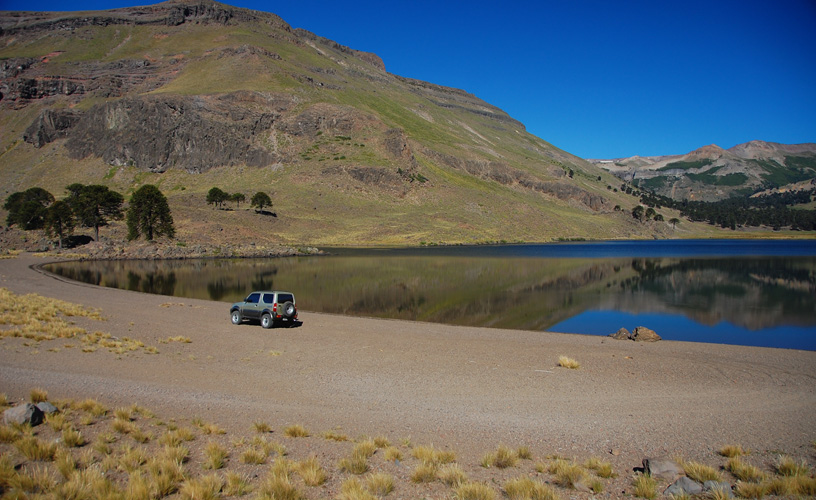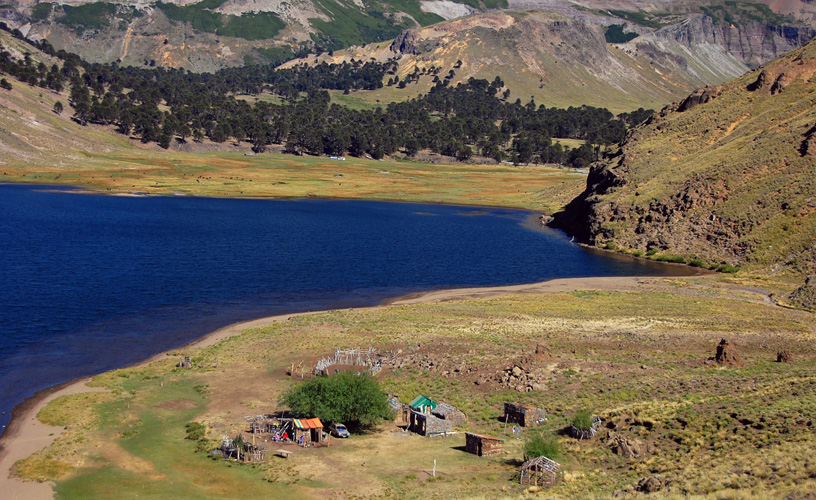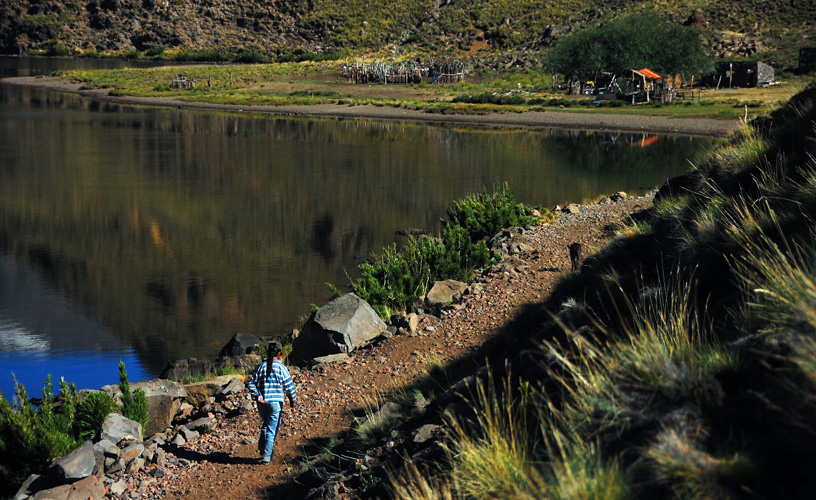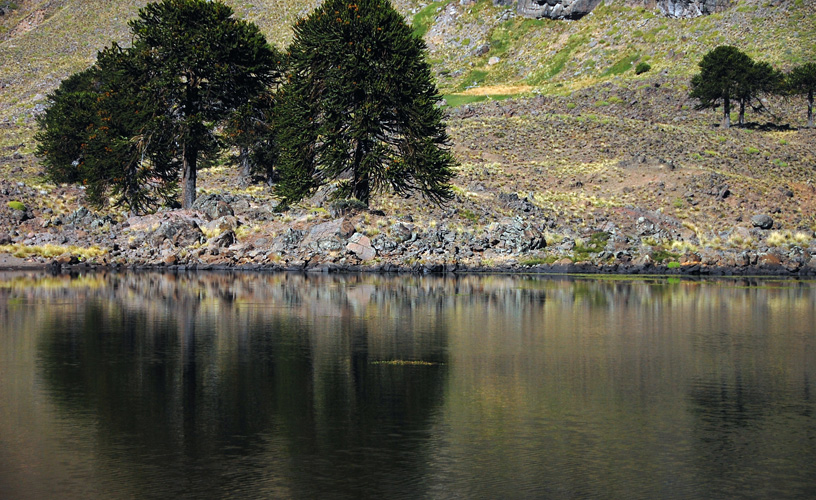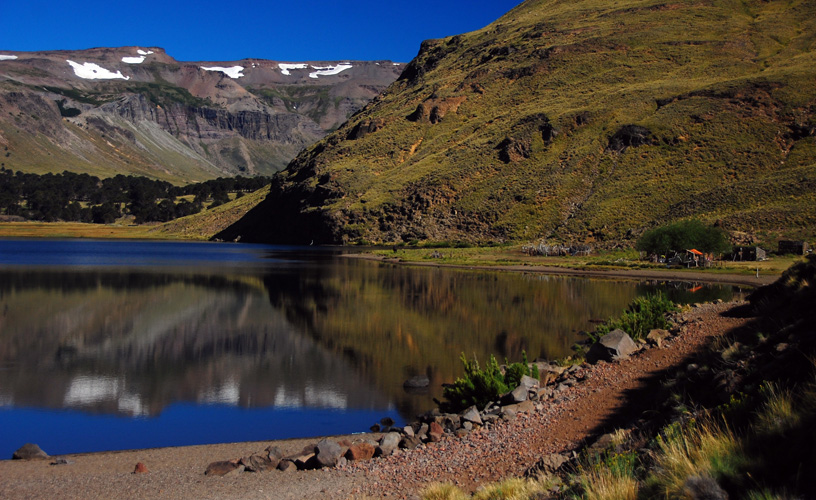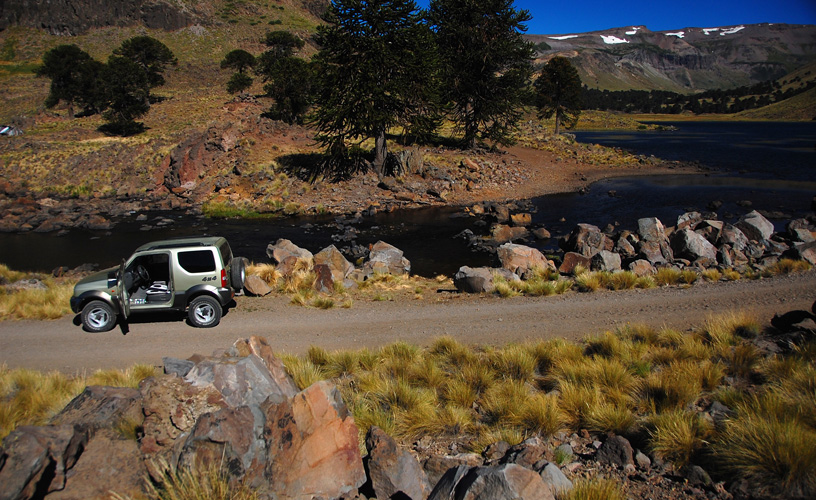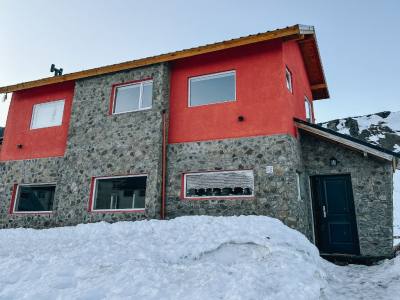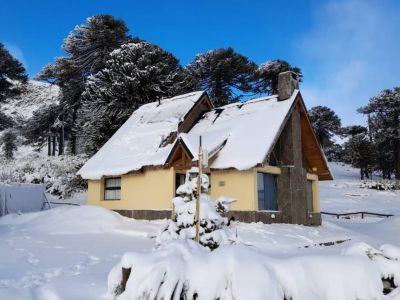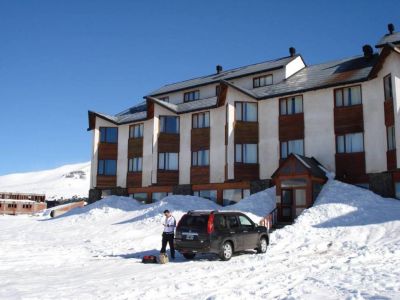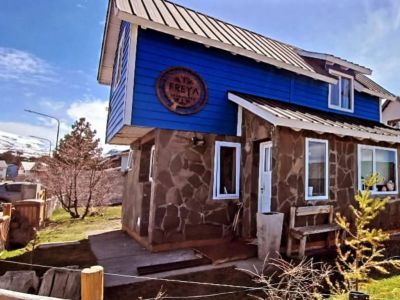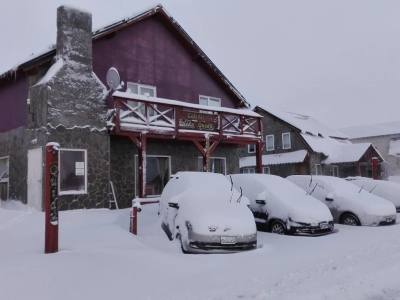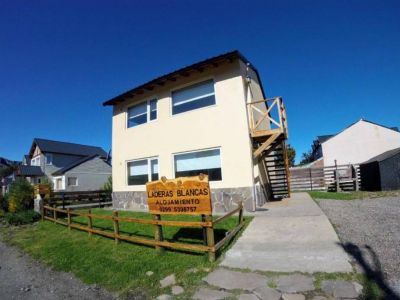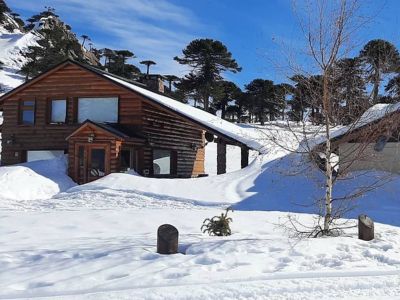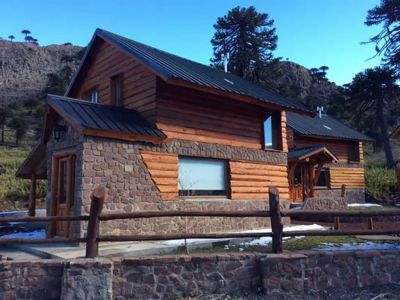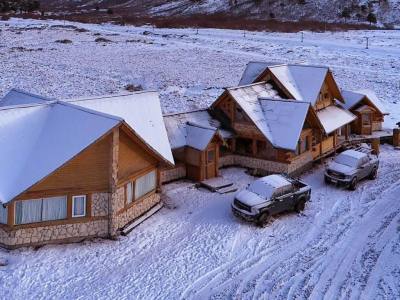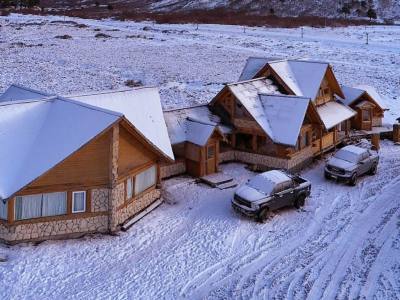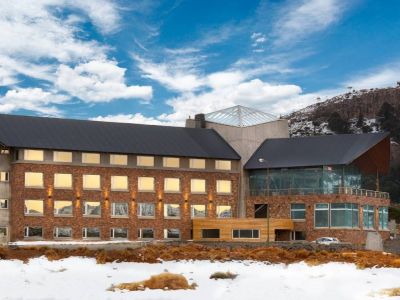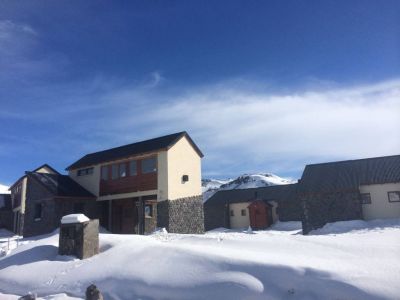During the summer transhumance season, the Mapuche communities take their animals to the high valleys, where they make the most of the humidity of the green grass growing after the long winters. What about visiting one of these sites? We got on our vehicle one afternoon and slowly drove to Lake Hualcupén, leaving Caviahue through a paved road in the direction of Loncopué. A few kilometers ahead, we would find a sign on the right. Once on the gravel road, we started to go up the mountain as we left behind the familiar scenery. We were welcomed by ancient specimens typical of this region: the monkey-puzzle trees. Capable of becoming adapted to the cold and windy areas, they looked like paper figures on the mountain ridge and its hillsides.
Sunset at Lake Hualcupén
Both young and old trees showed their lineage, their long years presiding over the area and offering their primitive fruit –the pine-nut- to the local settlers.
The Copahue Volcano and its constant fumarole were visible from that spot. The sulfurous waters concentrated in the pond located at its summit become steam when they make contact with the cold mountain air.
We crossed a gate and closed it behind us. The road went across a plain without any cliffs. Creeks with threads of meltdown water where the animals quenched their thirst appeared after some bends.
Lambs and goats were grazing on the hillsides without any fear of us. We perceived the purity of the air. It was completely free of pollution and unknown to us. We realized that that zone was accessed by very few visitors.
In a high spot, we discovered that the lake was real. It seemed to be waiting for our cameras. We shot some takes from several angles before we went down to the beach. The surrounding hills sheltered it from the winds and there was only one house with pens at sight.
We felt the silence around, only interrupted by some voice or some dog barking in the distance. The surface was so quiet that it was like a mirror where the mountainous skyline and the only house we had seen were reflected.
Mónica Pons
Eduardo Epifanio
When the gravel road starts, there is a gate into the Millaín Currical community. Visitors may cross it but make sure they close it afterwards.
